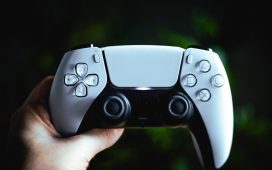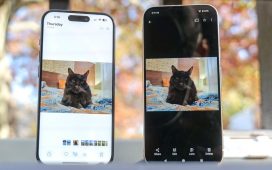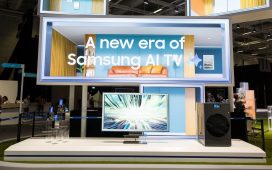Apple loves to use the iPhone to define what it means to be a smartphone. Why has the iPhone 15 failed spectacularly to deliver on that corporate dream? Now, Google has seized the advantage.
Launching a new iPhone is widely seen as a moment that can alter the smartphone market. While many Android innovations are clearly telegraphed—in hardware and software—the closed nature of Apple’s ecosystem means it can play its cards close to its chest and reveal them all in one avalanche of glossy pre-recorded videos to wow the press and public.
Assuming it can read the public’s mood correctly. The launch of the iPhone 15 family saw the introduction of titanium, the legally important USB-C port, a new zoom lens, and a move to 3nm technology for the A17 Pro chipset.
These are all solid iterations on previous handsets. Yet a few weeks later, the iPhone 15 launch feels like the last moments of the 2022/23 smartphone season. Days after the launch, Google swaggered into New York, tore up the script with the Pixel 8 Pro, and the rest of the Android world picked up the ball and ran towards, through, and past Apple.
That’s the ball with “AI” written on the side in some Adams-esque large, friendly letters.
Google’s Pixel 8 Pro
Ewan Spence
Google specifically called out the Pixel 8 and Pixel 8 Pro as AI-first smartphones “built with AI at the center for a more helpful and personal experience.” A wide range of features were demonstrated that use several AI techniques to improve the user experiences, such as editing individual elements in photographs, separating different audio in videos to minimize or emphasise their impact, improving text transcription and natural language in Google Assistant.
Last week Qualcomm released a wide range of products, but the critical piece of the smartphone AI evolution came with the top-of-the-line Snapdragon 8 Gen 3. It reflects years of AI research and development by Qualcomm. That’s reflected throughout the System on Chip, with AI included in the CPU, GPU, and NPU, as well as the ISP, the modem, and the sensor hub. By having these elements present in hardware, Qualcomm’s silicon can offer more performance to AI software.
With the SnapDragon 8 series in the premium handsets of many Android smartphones, you can expect everyone to build on this framework, lean into the AI capabilities on offer, and ensure everyone considering a new smartphone knows what they can deliver.
You can already see the start of this process. Xiaomi announced the Xiaomi 14 for the Chinese market, which will use the 8 Gen 3, and its AI features are front and center. The company has highlighted its input assistant for writing, improved text recognition when scanning documents, a sketch-to-image generative AI process, and use of AI to assist in searching images.
Honor was present at the Qualcomm event, previewing AI features for its upcoming Magic6 smartphone. It showcased a large language module similar to ChatGPT that will run on the device without needing cloud-based services to help personalise services to users. It also demonstrated more creative endeavours with AI used to bring photos and video stored onto the phone into a single mixed video.
Meanwhile, Apple’s key marketing for the iPhone 15 Pro and 15 Pro Max highlighted the titanium frame, the new zoom lens on the camera, and the user-definable action button.
It’s not that Apple is not using AI techniques in the iPhone. As Jon Gruber points out, iOS 17 features AI-based improvements to auto-correction, and iOS 16 introduced AI-assisted selection tools to edit photos.
Yet, if I were to ask the average consumer if Apple uses AI, it’s unlikely that the answer would be yes. Over the next few months of smartphone launches, every one of them will feature AI in some form, illustrated by some gee-whizz tech demos that turn out to be easily replicable when you try out a handset in-store.
Apple’s community will undoubtedly roll out the oft-quoted “Apple does it best, not first” to help explain why it will be losing at least a year of visibility in the AI market.
I’m not sure the waiting approach is as comforting as it sounds; look at the first consumer-focused MacBook with a 15-inch display launched this year, decades after the Windows market; the legally required move to support USB-C on the iPhone after years of a locked-down proprietary system, or the raft of AAA titles that arrived on macOS years after appearing on consoles and PC- oh that one’s still to happen.
But we’re sure Apple will do AAA gaming better than anyone, yes?
Apple had a chance to define what AI could mean to consumers worldwide, shape that view to its products, and bake its own corporate culture into how AI is delivered. It has missed that chance.
What could be a pivotal movement in the history of smartphones will be driven by the Android ecosystem.
Well played, Google. Well played.
Now read the latest iPhone, MacBook, and iPad headlines in Forbes’ weekly Apple news digest…










